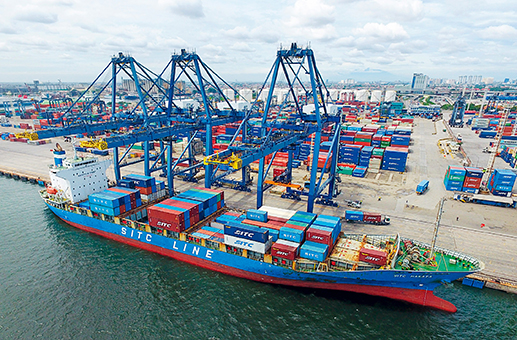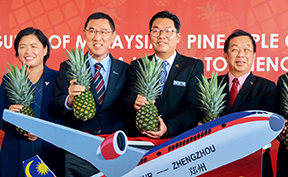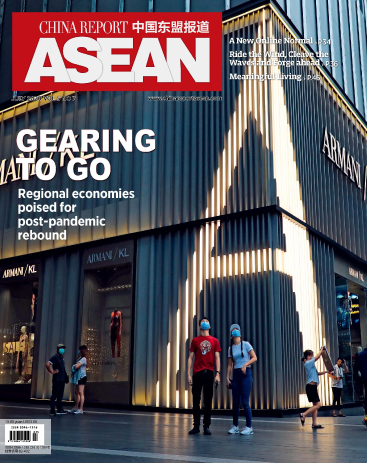Since China’s “going global” initiative began in 2002, Chinese enterprises have been ever-more active in expanding their businesses overseas, and establishing overseas economic zones has been one of the most noticeable phenomena among all types of economic cooperation. This trend was bolstered by the Belt and Road Initiative launched in 2013. Overseas economic zones are perceived as good platforms to produce tangible benefits for both host countries and Chinese operational enterprises within the Silk Road Economic Belt and along the 21st Century Maritime Silk Road, as well as vehicles to realize the ultimate goal of a community of shared future for mankind. However, when such endeavors are impeded head-on by the China-U.S. clash and the COVID-19 pandemic, development is soon tainted by “VUCA,” which stands for volatility, uncertainty, complexity and ambiguity—an accurate representation of today’s world scenarios.
China’s Overseas Economic Zones
China’s Ministry of Commerce (MOFCOM) revealed that by September 2018, Chinese enterprises had set up over 110 overseas economic zones with an accumulated investment of US$36.63 billion. The zones, mostly dedicated to manufacturing, energy, and agriculture industries, have accommodated around 4,500 business entities with economic output exceeding US$111.71 billion and tax revenue of US$3.08 billion to host countries.
The ASEAN region, an important nexus of the 21st Century Maritime Silk Road, remains a priority for the economic zone cooperation. Among the 20 successful overseas zones rated highly by China’s MOFCOM, seven are in Southeast Asian countries including Thailand, Cambodia, Vietnam, Laos and Indonesia, accounting for one-third of the total. In particular, the Sihanoukville Special Economic Zone, managed by a cooperative agreement between Cambodia and China’s Jiangsu Province, is recognized as a model project for Chinese-sponsored zones around the world.
Disruptions caused by the current China-U.S. clash and COVID-19 pandemic have brought alarmingly increased risk to overseas economic zone cooperation.
Fueled by the Belt and Road Initiative, Chinese enterprises, both state-owned and private, accelerated their pre-existing overseas expansion plans, leaving a series of problems to be addressed.
At the macro level, the geographical distribution of the zones is uneven, with inconsistent standards of development. Among all 47 Asian countries excluding China, 19 are currently hosting almost half of China’s overseas economic zones. For example, Indonesia alone has six. In contrast, only five out of 53 European countries accommodate Chinese zones, with three located in Western Europe and seven in Eastern Europe.
Financing and sustainable development are two primary technical challenges. According to MOFCOM’s survey, only 39 percent of all zones secured financing from banks, leaving the remaining 61 percent in financial difficulties. With sustainable development enshrined in United Nations’ documents and upgraded to global consensus, Chinese enterprises operating overseas should attach great importance to the environment and the social pillars of the United Nations Sustainable Development Goals (UNSDGs). We have already seen that ignoring these core principles would bring continuous repercussions against Chinese enterprises from local society. Since economic zones normally involve construction of large-scale infrastructure, any disruption will inevitably be expensive.
Another issue is security threat. As rated by China Export and Credit Insurance Corporation, as many as 84 percent of countries along the Belt and Road route are in the high-risk category. In some cases, companies lacking a proper security evaluation and other preparations rushed to settle in overseas zones and suffered from local harassment.
Emerging Risks
Since March 2018 when United States President Donald Trump signed a memorandum regarding United States’ trade with China, trade friction between the world’s two largest traders has been continuously escalated. A dozen rounds of high-level bilateral negotiations have produced only limited progress in solving the dispute. Some have suggested that the trade war has evolved into a holistic confrontation between two politico-economic systems, creating a new “Cold War” in a purely economic sense.
To sustain domestic stability during the trade war, the Chinese government issued a number of policies, including positive monetary policies and encouraging industrial policies, which would bolster the government’s efforts to cultivate overseas economic zones and boost involved enterprises. The central bank also cut the reserve requirement to inject liquidity into the market, which would mitigate financing pressure faced by related zones.
Through aggressive policies against China, the United States is clearly putting Chinese enterprises, particularly those operating overseas, under risk. One issue is Article 301 of the Trade Act of 1974 and the United States’ long-arm jurisdiction. The former allows United States Trade Representatives to launch negotiations with trade partners that United States rates most closed and least fair. If negotiations fail, Trade Representatives can impose sanctions of up to a 100 percent tariff on those trade partners. The latter allows U.S. courts to handle cases following the minimal relation principle, by which American courts can claim long-arm jurisdiction over even completely foreign entities that do not operate within the borders of the United States as long as the entity is using any services (such as an email address) provided by U.S.-based companies.
The United States’ punitive tariffs on China-based companies’ products exported to the United States have also resulted in a trend of many companies relocating their production from China to neighbouring regions like Southeast and South Asia. This move is costing these companies dearly, especially in terms of risk from inadequate relocation assessments and unmatched logistical systems. Furthermore, in today’s globalized world, it is difficult for any company to avoid linkage to the Chinese market and services of the United States. As such, the United States’ long-arm jurisdiction remains a looming sword constantly hovering above the heads of some companies.
Another threat is the seeming technological decoupling backed by the United States’ Entity List and the country’s scientific organizations like universities and research institutions. Once a foreign entity is placed on the Entity List managed by the United States Department of Commerce, the company or individual cannot access or purchase American technologies without a special permit from the Department of Commerce. Chinese technological giant Huawei has been under constant coercion from the United States due to the list. In fact, the coercion comes not only from the United States, but also from other Five Eye countries, namely the United Kingdom, Canada, Australia and New Zealand. For example, Britain just arbitrarily announced suspension of usage of Huawei 5G equipment and devices. Even more concerning is the spill-over of international politics onto university campuses. Chinese research universities were recently cut off from access to MATLAB, frequently-used software in scientific research provided by a United States-based company. There are few signs of such United States-launched decoupling stopping any time soon, which is especially relevant to Chinese companies operating in overseas economic zones that have been fighting hard to squeeze into foreign markets because the most advanced and core technological patents they have been using are still held by United States-based companies and institutes.
Factor of COVID-19 Pandemic
As the World Health Organization has suggested, the COVID-19 pandemic is going to last a long time. But thanks to successful models provided by mostly East Asian countries coupled with robust international cooperation, humans are expected to eventually overcome the virus. Nevertheless, countries’ different performances and results in response to COVID-19 could amplify the differences of socio-political systems and societal philosophies and values, further destabilizing ongoing clashes between China and the United States. In this context, the suffering of Chinese overseas economic zones would be compounded by the combination of the international clash and the pandemic-caused economic recession, not to mention stakeholders’ psychological pain.
The COVID-19 shock has hit Chinese economic zones in ASEAN countries in myriad ways. As a government-conducted survey of zones in Indonesia illustrated, COVID-19 first and foremost cut off the integrated value and supply chains between China and Indonesia. Without local substitutes available or qualified, about 40 percent of Chinese-invested factories relied on Chinese domestic providers for raw and intermediate materials. The blocking of such materials incurs significant costs due to production suspension, putting business owners in a shortage of circulating capital. Both employees and managers were prevented from physically returning to the factories and resuming production by policy constraints of quarantine and flight control. In some cases, even though personnel had returned to their positions, new working procedures and conditions due to the pandemic have significantly hurt production efficiency. This is above and beyond any local anti-China protests caused by nationalist propaganda accusing China of deliberately spreading COVID-19.
The good news is that effective control of the situation in China coupled with international cooperation between China and ASEAN countries backed by both sides’ leaderships and medical professionals has enabled East Asian countries to take the global lead in reopening their economies and resuming production. Progress has also been achieved in various zones in the ASEAN region. Because many Chinese companies are operating essential industrial production services like power plants, mines and dams, these companies have been able to resume or even expand operations based on bilateral agreement. Thanks to the recovery of major economies in Northeast Asia including China, Japan, and South Korea, regional value and supply chains were repaired and now facilitate relatively stable and free flow of people and materials.
Regional Prospects
Plenty of buzzwords have emerged to describe the decoupling of China and the United States. Looking at regional relations and developments in today’s context of both the China-U.S. clash and COVID-19 pandemic, the situation is not actually as bad as it seems. Moreover, the pandemic will likely further integrate the industrial and value chains of Northeast and Southeast Asia. In recent years, East Asia regional economic output and trade volume has surged continuously. In 2019, East Asia trade volume grew to represent more than 25 percent of the world’s total. The same year, ASEAN surpassed the United States to become China’s second largest trade partner.
The United States-launched trade dispute with China has indeed reduced the flow of imported manufacturing goods from China, which, based on U.S. statistics, were mainly replaced by goods from Mexico and Vietnam. However, industries now moving out of China are largely middle and low- level producers that have been unable to adapt to China’s market needs and the increasing costs of keeping production in China. Even the exiting industries are clinging to a China Plus One strategy, which preserves access to the Chinese market. Indeed, the largest single market and sophisticated economic system of logistics and manufacturing developed by China over the past four decades cannot be easily replaced or avoided for the foreseeable future.
Considering that the United States has achieved bipartisan consensus on containing China, a strategic competitor, which is mentioned not only in Trump Administration’s National Security Strategy but also in the recently released United States Strategic Approach to the People’s Republic of China, the China-U.S. trade war will not likely end any time soon. Facing an impending economic slowdown, China is actively exploring the potential of economic cooperation with developing regions. The UN’s International Trade Centre has shown that the trade potentials of South and Southeast Asia can make up for China’s lost trade volume with the U.S. So far, Southeast Asia has remained a priority for China’s overseas economic zones. The zones perform relatively soundly in terms of management and facilities.
For the short term, companies and zone operators should place special attention on prevention and control of the pandemic while continuing to manage relations with local societies and governments. For the long term, businesses should focus more on compliance, legal consultation, and security assessment to avoid threats and risk caused by the United States and its allies.
Since economic zones normally involve construction of large-scale infrastructure, any disruption will inevitably be expensive.
US$36.63 billion
4,500 business entities
US$111.71 billion
US$3.08 billion
Chinese enterprises had set up over 110 overseas economic zones with an accumulated investment of US$36.63 billion. The zones, mostly dedicated to manufacturing, energy, and agriculture industries, have accommodated around 4,500 business entities with economic output exceeding US$111.71 billion and tax revenue of US$3.08 billion to host countries.

A Chinese freighter docks at the Port of Tanjung Priok in Jakarta, Indonesia, one of the most important shipping hubs along the 21st Century Maritime Silk Road, on April 8, 2017. (DU YU)

On November 26, 2019, Malaysia’s Deputy Minister of Agriculture and Agro-Based Industry Sim Tze Tzin (second right) and Malaysia’s Special Envoy to China Tan Kok Wai (first right) attend the launch ceremony for a chartered flight for pineapples to be exported to China at Kuala Lumpur International Airport. (Chong Voon Chung)

The final assembly line established by China-based SGMW Automobile at an industrial park in Cikarang, Indonesia. (DU YU)

In 2019, East Asia trade volume grew to represent more than 25 percent of the world’s total.
About the author Hao Nan is a graduate student in public policy at the Lee Kuan Yew School of Public Policy at National University of Singapore and an assistant research fellow at the Charhar Institute.


 Copy Reference
Copy Reference